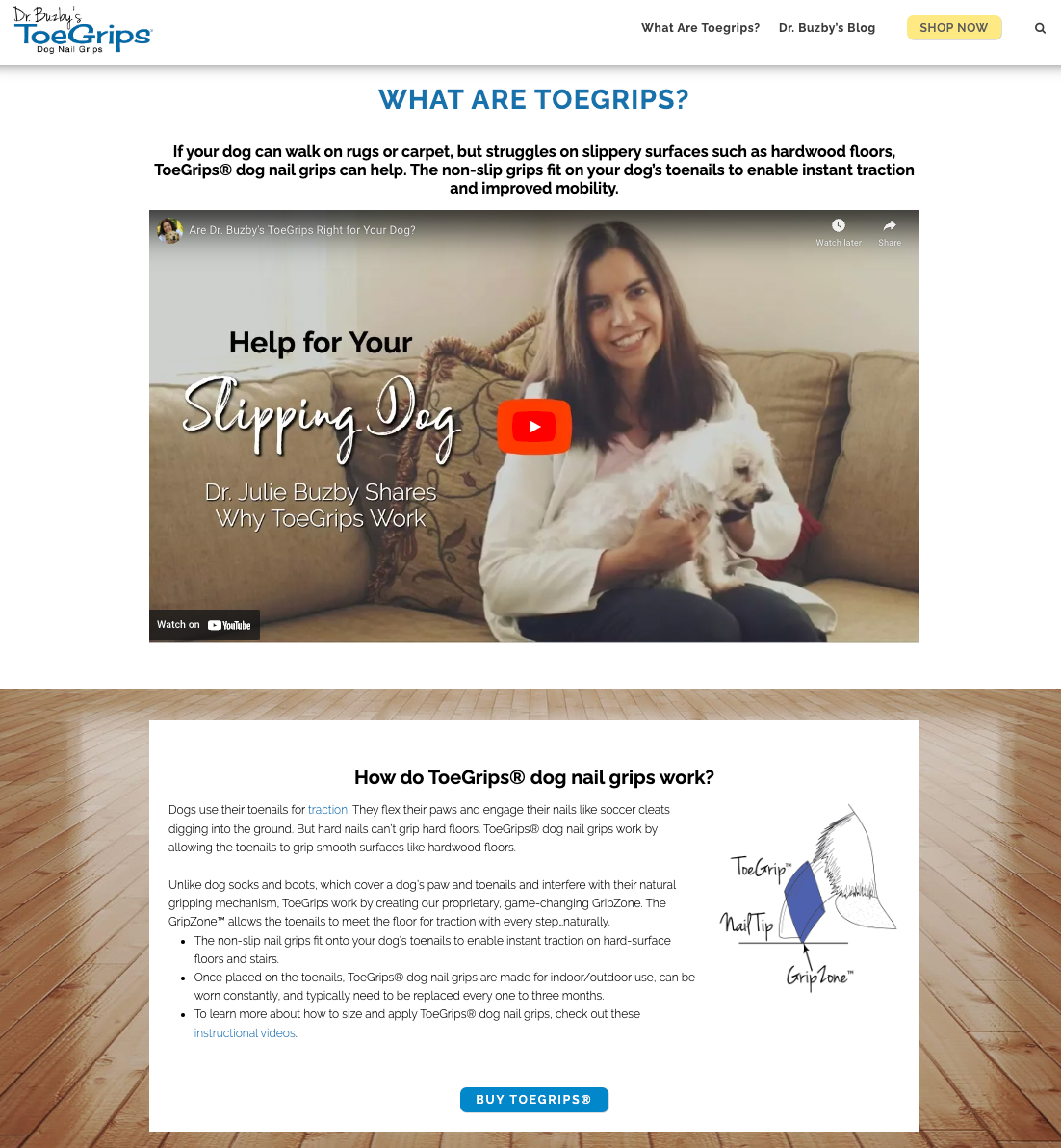Here’s recent research that may shock you.
Out of all the different marketing channels available to you today, including YouTube, TikTok, Facebook, Instagram, Pinterest, search ads, email, and more…

You may be thinking, no way! Websites aren’t that important these days.
Well, check this out.
According to Strategic Insights for the Pet Industry: Pet Owners 2023 & Beyond — “50% of pet owners learn about new products directly from pet product company websites.”1
The American Pet Products Association (APPA) article that revealed this finding advised, “Investing in your own website is a smart marketing strategy, and the data backs it up. Implementing best practices for SEO, product marketing, and accessibility will help your website more effectively communicate to the pet owners who are browsing your website.”1
Now my question is — when’s the last time you reviewed your website content, to make sure it’s bringing in more of those potential customers?
Don’t worry if it’s been a while and you’re looking for better results. I’m here to help.
Let’s address each best-practice category mentioned in the article quote.
SEO (Search Engine Optimization)
Every day, your potential customers are searching online for the pet products you offer. Compared to your competition, are your products ranking well in Google search results? Or is it a real struggle to be found on Google?
To make sure your product pages are found… your product content should reflect what people are searching for.
For instance, let’s say you sell a unique line of reflective, weatherproof dog collars and vests. You’re in great shape if your product pages actually contain those exact search words (keywords).
But I see missing keywords on pet-business websites all the time, so in this case, the product page may just say “reflective vests” versus “reflective dog vests.” That’s a missing detail for people searching online… and even for Google! Why? Because people wear reflective vests as well, for jogging, etc.
Another example is a website selling gourmet, grain-free dog food… but the product page just says “grain-free banquet.” That confuses Google. Is that food item meant for anyone, or babies, or dogs, or cats?
Do a gut-check on all your product pages to make absolutely sure the content specifically states who it’s for (dogs, cats, etc.). If you find that those words are missing, it’s easy enough to add them to each product description, your page title, and your “meta description” which shows up in search results like this example for “reflective dog harness:”
That’s the very essence of SEO: making sure your content matches what your prospects are searching for online.
Product Marketing
Now, about your product pages. Do they have appealing, irresistible descriptions that showcase why your products are ideal for the customer? Better than the competition?
Or are they presenting “just the facts, ma’am” … or very little information at all?
Think of your website as your online storefront. Consider how your content should tell visitors what’s amazing about your products — what will capture the attention and imagination of your visitors. This is the heart of product marketing.
Example: Dr. Buzby’s ToeGrips for Dogs. When you visit their website’s “What Are ToeGrips?” page (shown here), you’ll see that the purpose and benefits of their ingenious products are featured through a video, a “how it works” section, an “are they right for your dog?” section, a before/after image, and much more to present a super-compelling marketing message that drives interest and orders.
Imagine how your sales could skyrocket if you’re making a compelling case for each of your products through magnetic content! Consider including a big reason why you carry the products you do … what makes them special or the best for the pet owner/potential customer … demonstrate proof … and so forth.
Accessibility
Today’s websites must be accessible to all visitors, including those with disabilities as defined by the Americans With Disabilities Act (ADA). That means your pet business site should measure up to ADA criteria. Here are just a few items that can affect accessibility:
- Color contrast between your website background color and font color, to allow for easy viewing
- Photo captions and tags for screen readers to identify what photos are about
- Automatic captioning on all videos for people with hearing issues
- Clear, distinct text links in a different color from the main text, AND underlined
You can run your website through a free accessibility tool (such as AccessiBe) to find out how it measures up against ADA compliance factors. It’s a great way to discover what’s missing and how to fix the problem areas.
In summary, you and your team will benefit from a “content audit,” following these tips, to make sure your website is a marketing machine. After all, with the APPA projecting that a total of $150.6 billion will be spent in the U.S. pet industry this year — from 86.9 million U.S. households that own a pet — wouldn’t it be great to get more of that revenue for your business?2
Until next time,
Here’s to your prosperous pet business!
Pam Foster, PetCopywriter.com
NOTE: We are not affiliates of the websites mentioned in this article.
Sources:
2 https://www.americanpetproducts.org/research-insights/industry-trends-and-stats



